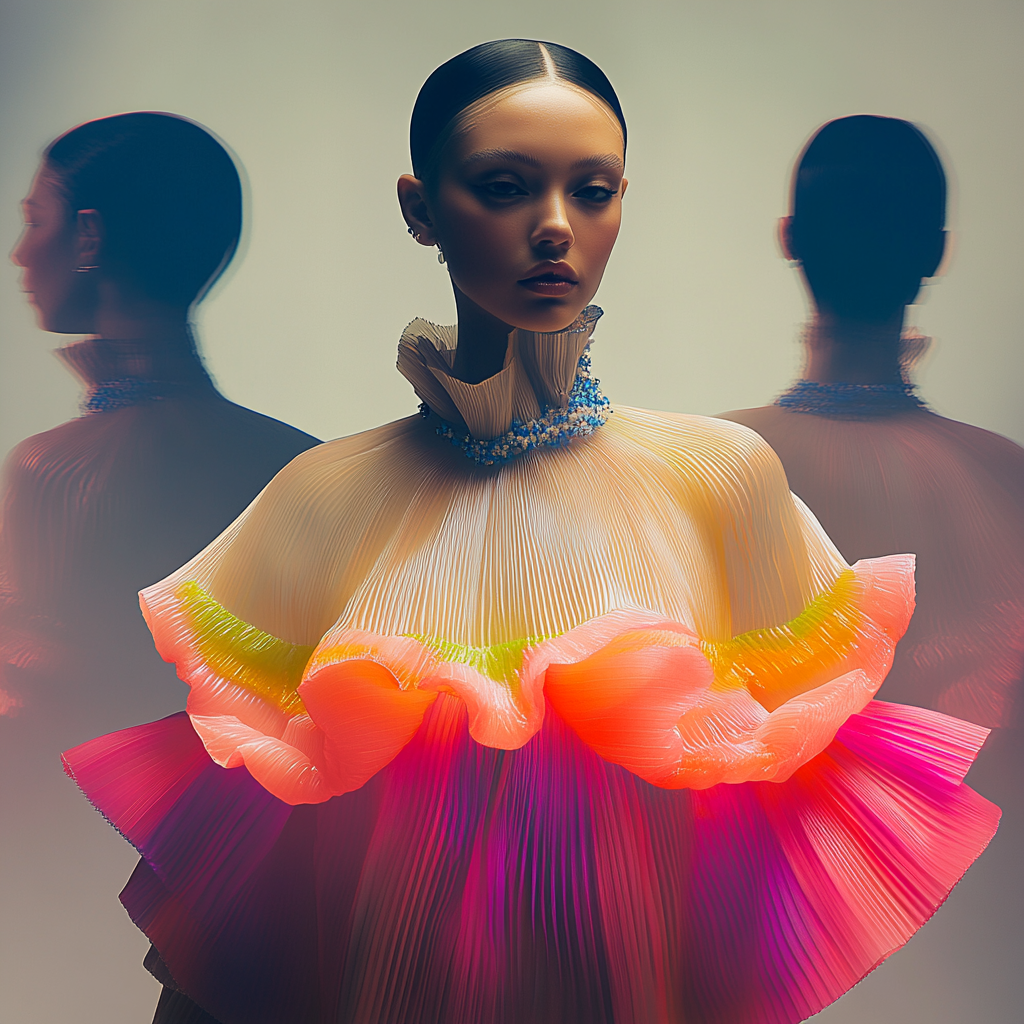The visual component of your brand is more crucial than ever. As consumers are bombarded with countless images and messages every day, standing out requires a strategic approach that combines creativity with innovative technology. The integration of AI into design processes presents exciting opportunities for brands to enhance their visual language while maintaining the personal touch that defines their identity.

NAUDE BOURNS CAMPAIGN USING AI IMAGES PERFECTLY SITS WITH THEIR BOLD BRANDING
The Importance of Visual Language in Branding
Visual language refers to the imagery, colours, typography, and overall aesthetic that convey a brand's identity. A strong visual language can differentiate a brand and foster a deeper connection with its audience. In a market saturated with options, effective visuals are essential for capturing attention and conveying messages quickly.
The Role of AI in Visual Design
AI technology has revolutionized the design landscape, offering tools that can streamline processes, enhance creativity, and produce high-quality visuals. Here are some ways AI can transform a brand's visual language:
1. Automated Design Generation: AI can generate design concepts based on specific parameters, allowing brands to explore a wider range of creative possibilities without the constraints of traditional methods.
2. Personalisation at Scale: AI can analyze consumer data to create personalized visuals that resonate with individual preferences, enhancing engagement and loyalty.
3. Rapid Prototyping: With AI, brands can quickly produce visual assets for testing and feedback, enabling them to adapt to market trends and consumer demands in real time.
4. Cost Efficiency: AI reduces the need for extensive photoshoots and design revisions, allowing brands to allocate resources more effectively.
5. Consistent Quality: AI algorithms can ensure that visuals maintain consistent quality and style, reinforcing brand identity across all platforms.
The Pitfalls of AI in Branding
While AI offers numerous benefits, there are potential pitfalls that brands must navigate:
1. Loss of Human Touch: Over-reliance on AI can lead to a lack of authenticity in brand messaging. The personal touch that defines a brand must not be sacrificed for efficiency.
2. Quality Control: AI-generated visuals may not always meet the high standards expected in branding. Human oversight is absolutely essential to ensure that all outputs align with brand values. I imagine we are going to see a slew of bad AI images this year as companyss race to slash budgets and prove their innovative ways.
Here we see a major French brand embracing AI but lacking any quality control which seriously diminishes their brand with poorly presented images for the sake of getting involved with AI...Oh dear.

HOW NOT TO DO AI IMAGE GENERATION LANCEL X PENCIL
3. Ethical Considerations: AI can inadvertently produce content that lacks cultural sensitivity or inclusivity. Brands must remain vigilant in reviewing AI outputs to avoid missteps.
4. Dilution of Brand Identity: Poorly executed AI-generated content can dilute a brand’s image. Maintaining a strong brand identity requires careful integration of AI into the creative process.
5. Dependence on Data: While data-driven insights are valuable, they can lead to formulaic designs that lack creativity. Balancing data with human intuition is crucial. We have seen this in the music industry where radio stations make playlist decisions based on data rather than the qualities of the song/artist, which undoubtably over the last decade has led to a decline in musical creativity.

Design Considerations for Using AI in Branding
To effectively integrate AI into a brand's visual strategy, consider the following design principles:
1. Define Your Brand Aesthetic: Clearly articulate your brand's visual identity, including colours, typography, and imagery styles. This foundation will guide AI-generated content.
2. Implement Quality Control Processes: Establish a review system for AI-generated visuals to ensure they meet brand standards and resonate with your audience.
3. Emphasize Personalisation: Use AI to create tailored visuals that speak to individual consumer preferences, enhancing the overall brand experience.
4. Incorporate Human Creativity: Use AI as a tool to augment, not replace, human creativity. Collaborate with designers to refine AI outputs and infuse them with the brand's unique voice.
5. Monitor Trends and Feedback: Stay attuned to market trends and consumer feedback to adapt your visual strategy. AI can provide insights, but human interpretation is key.

The Lifestyle Image Ai Suite
At Skinny We understand the challenges brands face in maintaining a strong visual identity while navigating the complexities of modern marketing. Our Lifestyle Image Ai Suite offers a solution that combines the efficiency of AI with the personal touch that defines effective branding.
What’s Included:
- AI-generated lifestyle images tailored for your brand from your brief
- Marketing and advertising usage rights
- High-quality, professional-grade visuals
- Versatile imagery adaptable across various markets
- Swift turnaround for maximising marketing impact
Find out more of what we could offer your project in terms of extraordinary visuals.
#ai generated images, #ai photo, #aigenerated images, #ai image, #ai created images, #ai generated pictures, #stock images, #brand images, #stock photos, #high resolution images, #high res images









